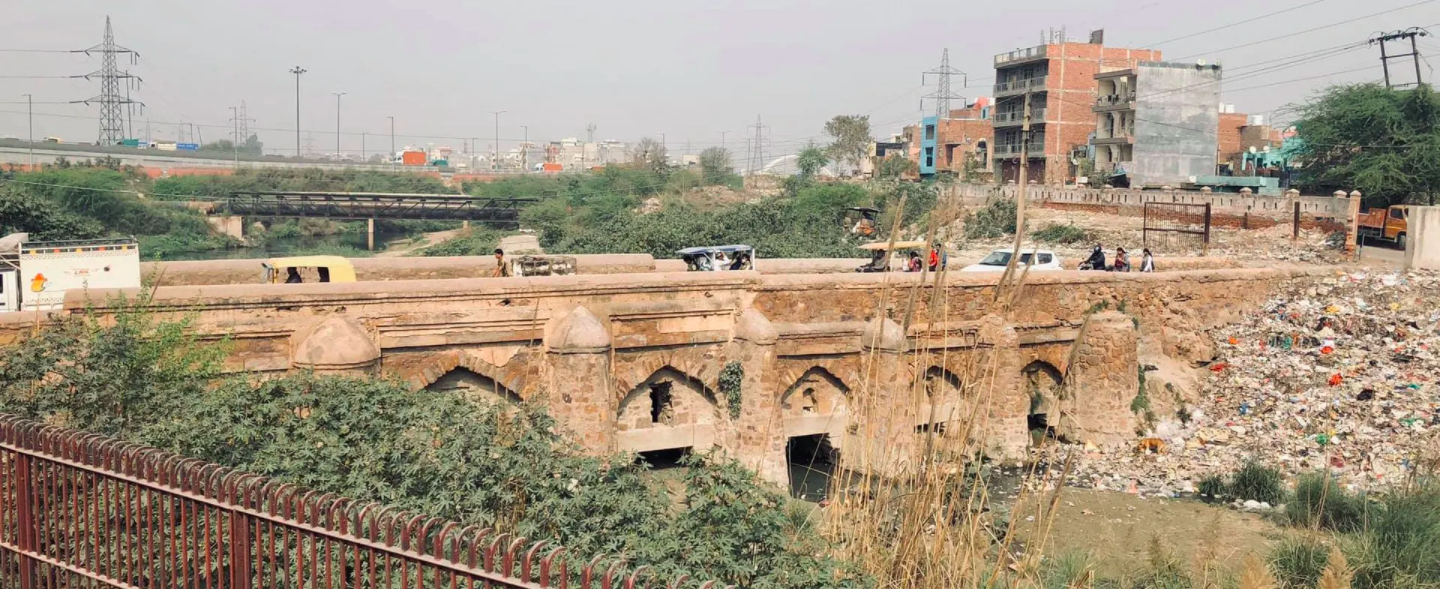Located in the North-Eastern part of Delhi, the Wazirabad bridge is the oldest one among the hundreds of bridges. It’s a 700-year-old one built by the ruler Firoz Shah Tughlaq (r.1351- 1388 CE) on the route connecting Punjab, UP and Lahore, facilitating connectivity across the Yamuna. He was the third sultan of the Tughlaq dynasty and cousin and successor of Muhammad Bin Tughlaq.
During those days there were only two bridges to cross the river Yamuna, the first bridge near Salimgarh and the second being the Wazirabad bridge. The famous Mongol ruler Genghis Khan also came to Delhi through this bridge. Some Mongols who came with him had settled here. Historian and Regional Director of the Archaeological Survey of India, K.K. Mohammed explains – all the invaders used to try to attack Delhi through this route at that time. Alauddin Khilji had beheaded some of the invaders who had come through this bridge and buried them in the Siri Fort. Since then the invaders did not dare to attack Delhi. The region is of utter importance to rulers which is evident from the fact that even when the bridge was not there, this route was used during the time of Emperor Ashoka. At that time wooden bridges were built. Because this was the only route that led to Panipat, Punjab, Peshawar and Baghdad. When the revolution of 1857 took place during the time of the British, the revolutionaries had entered the Red Fort from Meerut through this bridge and the Salimgarh bridge.
Such stories are also prevalent among the people that during the time of Firoz Shah, the water of Yamuna near Wazirabad was very clean. There was a dense forest around and at that time a very picturesque view was generated. At that time, the king’s Wazir(prime minister) himself used to come here with soldiers to rest and give water to the horses. Because of the Wazir, it got its name as Wazirabad.
Wazirabad bridge is made up of rubble. It has nine arches, colonnades and screen windows and was an engineering marvel when constructed in the 14th century AD.
There is another Tughlaq era structure standing right next to the Wazirabad bridge. It is the tomb complex of Sufi saint Shah Alam. He was a saint who rose to prominence during the reign of Firoz Shah Tughlaq. Adjoining the tomb is a mosque with three domes. The square-shaped tomb of the Sufi saint was built in the courtyard of the mosque and rests on 12 pillars. There is a chamber for prayers, which is divided by five arches and with two bays. There is even a prayer chamber for women.
The present-day condition of both the monuments is in a dilapidated state. In the dire need of conservation, the structure is dying. With anti-social activities engulfing the premises and illegal encroachments possess another threat. The beauty of the place is undermined by the busy traffic crowd passing through here and the negligence to take some preservation measures by the Archaeological Survey of India.
Cover Photo by Live History India




